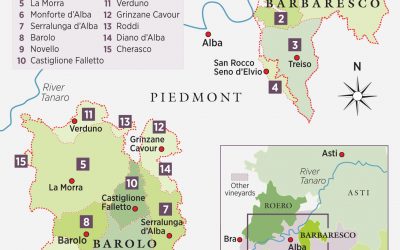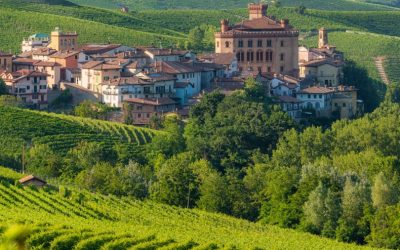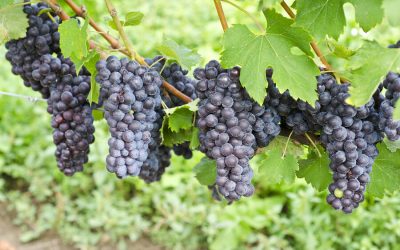What was a better year for wine 2016 or 2017?
When it comes to evaluating the quality of wine vintages, it’s essential to understand that wine is a product of nature and, as such, is subject to the whims of weather, soil conditions, vine health, and winemaking techniques. Each vintage tells the story of that year’s unique environmental circumstances and reflects the winemaker’s ability to adapt and manage these conditions.
The years 2016 and 2017 presented distinctive climatic conditions, impacting the vineyards and resulting wines differently. The question of whether 2016 or 2017 was a better year for wine is not straightforward and depends greatly on the region and the specific wine style in question. In this article, we will take a deep dive into these two vintages, comparing and contrasting their impact on wine quality and character.
What was a better year for wine 2016 or 2017?
When it comes to comparing the Barolo vintages 2016 and 2017 for wine, it depends on the specific region and the wine type in question. However, generally speaking, both years brought their unique advantages to the table.
The 2016 vintage was primarily characterized by a nearly perfect climate that led to outstanding wines, especially reds. The year started with a cold winter, followed by a warm, dry spring, resulting in a great start to the growing season. The summer was hot with well-timed rains, maintaining balance in the vineyards. Autumn continued the trend with dry conditions and significant diurnal temperature variations, enabling the grapes to mature evenly while preserving their acidity. This combination resulted in wines marked by a superb balance of intense flavors, firm structure, and high acidity, hinting at the potential for long-term aging and complexity. This vintage was particularly spectacular for Barolo wines.
In contrast, 2017 was a more challenging year, with weather extremes including frost in spring and a scorching hot, dry summer. Despite the hurdles, winemakers adapted and still managed to produce high-quality wines, although in smaller quantities. The wines of this vintage often show more ripe, concentrated flavors due to the heat and are generally considered more approachable in their youth compared to the more structured and age-worthy 2016 counterparts. They can provide a different, equally enjoyable perspective on the capabilities of the region and the adaptability of its winemakers.
2016 Wine Vintages: A Year In Review

Barolo 2016 Vintage FAQ:
Is 2016 the best year for wine?
2016 was an exceptional year for wine, particularly for red wines. This was primarily due to the climatic conditions that prevailed throughout most of the world’s key wine-growing regions. Europe, particularly France and Italy, witnessed nearly perfect weather conditions. An El Niño year, it brought weather patterns that were highly favorable to the vineyards, leading to excellent grape quality and superbly balanced wines. In Italy, the Barolo wines from this vintage have gained much praise for their balance, depth, and potential for aging.
Is 2017 a good wine year?
The quality of the 2017 vintage varied significantly across different regions. In many parts of the world, it was a challenging year due to a number of weather-related events, including frost and heatwaves. However, despite these challenges, many regions still managed to produce high-quality wines. For instance, in Italy, the year’s hot, dry conditions led to more concentrated, fruit-forward wines that were more approachable in their youth compared to the more structured and age-worthy 2016 counterparts.
Is 2016 a good year for red wine?
Indeed, 2016 was an outstanding year for red wines. The weather conditions that year resulted in red wines of exceptional balance and structure, especially in regions like Piedmont in Italy. The Barolo wines from this region in 2016 are considered some of the best, characterized by their intense flavors, firm structure, high acidity, and excellent aging potential.
Was 2017 a good year for wine in Italy?
In Italy, 2017 presented some challenges due to weather extremes including spring frost and a hot, dry summer. Nonetheless, Italian winemakers managed to adapt and produce quality wines. The wines of this vintage are often characterized by more ripe, concentrated flavors due to the heat, and are generally more approachable in their youth compared to the wines from 2016.
About 2016 and 2017 in broader context:
The climatic conditions in 2016 led to a fantastic vintage, providing wines with structure and depth, which are predicted to age excellently. In contrast, the very warm 2017 growing season, particularly in Italy, resulted in well-balanced wines that, while not offering stellar aging potential, have been well-received for their approachable nature. The subsequent years, 2018 and 2019, have shown promising qualities, with 2019 being touted as potentially the best vintage of the decade.
It’s important to note that the characteristics and quality of wines in any given year can vary greatly depending on a myriad of factors including the specific region, grape varietals, and the skill and decisions of the winemakers. Therefore, these generalized assessments may not hold true for every wine from a particular vintage.
Conclusion
In conclusion, deciding which is the better year between 2016 and 2017 largely comes down to personal preference. If you prefer wines with structure, complexity, and aging potential, you might lean towards the 2016 vintage. If you appreciate more immediately accessible and fruit-forward wines, the 2017 vintage could be the one for you.




